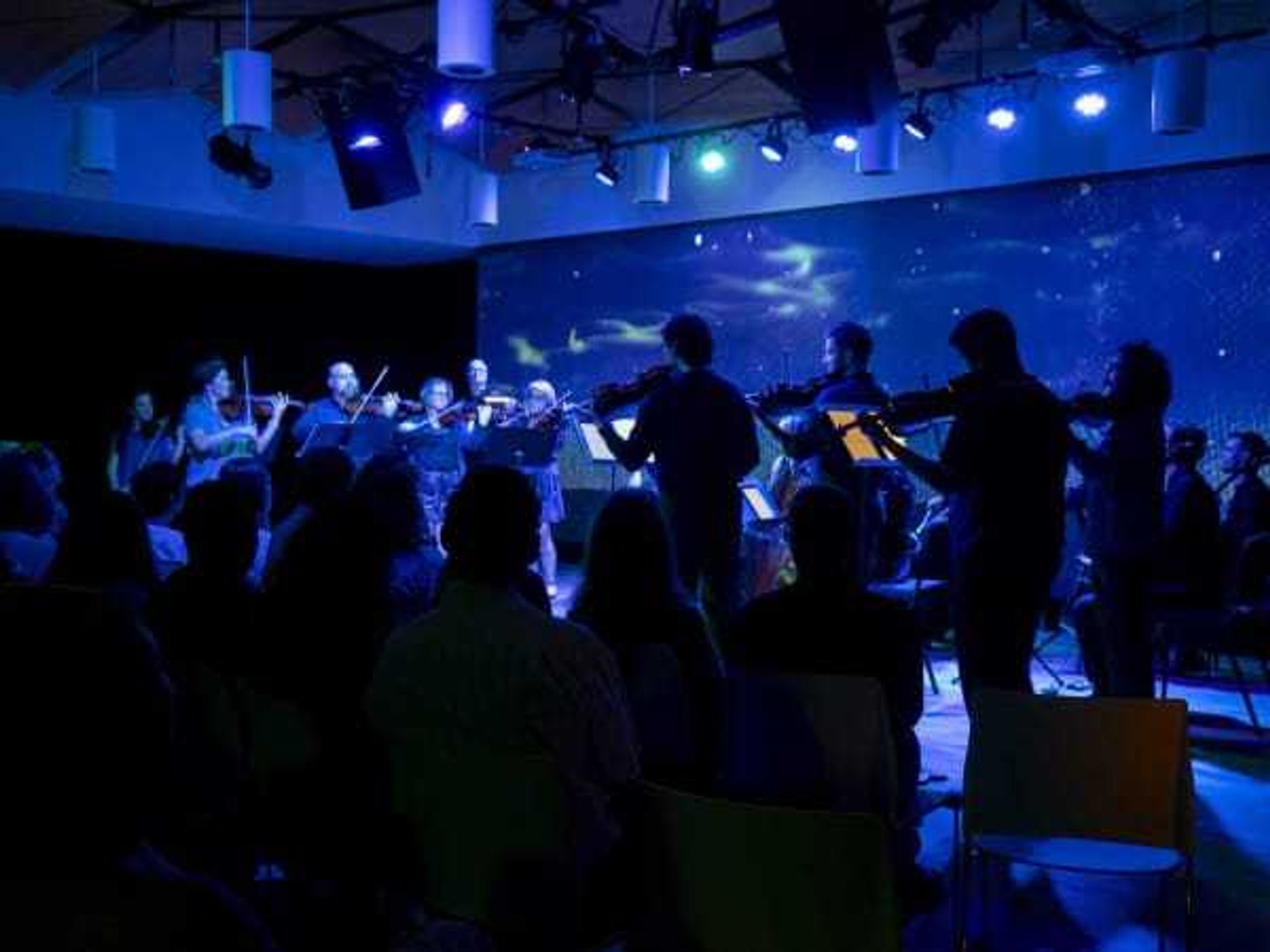Sound science
These artists-in-residence are redesigning music at The Contemporary Austin

Upstairs at Austin museum The Contemporary, a large space is strewn with electronics, acoustic instruments and miscellaneous items arranged like chemistry or physics experiments. They sit astray as if dropped by a musician after a momentary midnight inspiration, some tinkering, and a semi-satiated curiosity.
Devised by Lebanese-born, Paris-based composer Tarek Atoui, the “research laboratory” allows artists to explore sound making with no constraints except the build of the instruments and the space itself.
While art around the rest of the museum may be getting at a specific message, these explorations are free of an agenda. Like many of Atoui’s projects, the art is in the collaboration between maker and player, and the performance between player and curious watcher.
Three musicians will take residencies at the museum, each for a two-week period, to develop a familiarity with the tools that will inform Atoui’s upcoming exhibit at The Contemporary, “The Whisperers,” from April 9-August 14.
Each artist-in-residence spends the first week in unstructured studio time, taking notes and inviting other artists of their choice to come and collaborate. During the second week, the artist leads workshops with a community partner (Austin Soundwaves, Texas School for the Blind and Visually Impaired, and Girls Rock Austin).
This project is backed by the Suzanne Deal Booth/FLAG Art Foundation Prize, which includes a $200,000 award, production expenses in Austin and New York, and more public-facing support.
The first artist in residence for “Lab – Tarek Atoui: The Whisperers,” Henna Chou, emanates a slowly drifting calm as she surveys the space she has been working in. Kicking off the experiment, she doesn’t seem to feel any pressure in her pioneering. In fact, where many artists would seem frenzied with ideas, Chou seems introspective but pleasantly detached.
“I think I’m kind of known for just randomly saying yes to things and dealing with it,” Chou says. “I mean, there wasn’t a lot to deal with. I often get asked to be a part of something where it’s a little bit vague.”
When asked, Chou can’t seem to put a finger on what made Atoui, a new contact, invite her to participate. It’s as if the question never crossed her mind. While this nonchalance could be mistaken for aloofness, Chou’s tone is friendly and interested.
The decisions she makes in the studio display an alertness not just to the experience of making sound, but the experience of those listening. She saves her more raucous experience for after hours, out of courtesy for visitors who may be sensitive to sound.
One of the instruments Chou talks about is the DuoFluctus by builder Sergey Filatov. The two-stringed instrument is without frets and vibrates with an electromagnetic field that the player controls with a knob, emitting a shifting hum. In addition to creating drones, which Chou sees as the obvious approach, she has been considering a group performance with rhythms (perhaps performed with dulcimer sticks or a guitar pick) and written parts.
The DuoFluctus happens to be one of a minority of items recognizable as instruments in the studio; others include an amplified IV drip into a bucket of water and a steel plate with painted wood blocks on top being tickled by a bunch of reedy branches.
“[New techniques are] either illegal in classical music, or later on, they’re considered extended techniques,” says Chou, considering her methods of experimentation and the evolution they might bring. “Any normal person — if they were given an instrument and they didn’t know about the rest of the world — they would have tried all these things. They would have tried whacking it, or hardtop hits. ... It’s fun to apply traditional techniques in one area to another area.”
The current artist-in-residence from February-March 2 worked with Atoui years ago at his first solo exhibition in Mexico. Chris Cogburn, a percussionist, is interested in resonant frequencies using familiar instruments, including drums and contact microphones. Branching out, he is looking forward to trying out the DuoFluctus and the limaçon, a feedback device that works with struck metal instruments such as cymbals and gongs.
“‘The Whisperers’ is both a singular environment and an open process which, I believe, is asking me to learn through a refined engagement practice, which is part of Tarek’s genius,” Cogburn writes via email. “He sets up an environment that allows each artist to assert their personal processes onto something that is much bigger than their individual practice or aesthetic interests.”
Parham Daghighi, a Texas-born Iranian multi-instrumentalist, will close out the experiments from March 3-17. Daghighi got involved through his friend at The Contemporary, Robin Williams, and is coming at the project not just as a musician, but a graduate student in social work looking forward to the community collaboration aspect. He touches upon a similar theme for all three artists involved: the openness of improvisatory art and a willingness to simply show up and see what happens.
“I’m terribly interested in creating problems that I can spend time resolving, whether it be in an installation or in an improvised performance with others,” Daghighi writes. “I see the various sound environments contained in ‘The Whisperers’ as having a lot of potential to create interesting systems that I can then problematize and think about.”
The lab is open now through March 17 in preparation for “The Whisperers,” which will take over Contemporary Austin’s Jones Center April 9-August 14.
For more information, visit thecontemporaryaustin.org or stop by the lab itself, watch the artist experiments, and chat with gallery attendant Ulysses Cueto. All tickets must be purchased in advance, but Thursdays are free.
